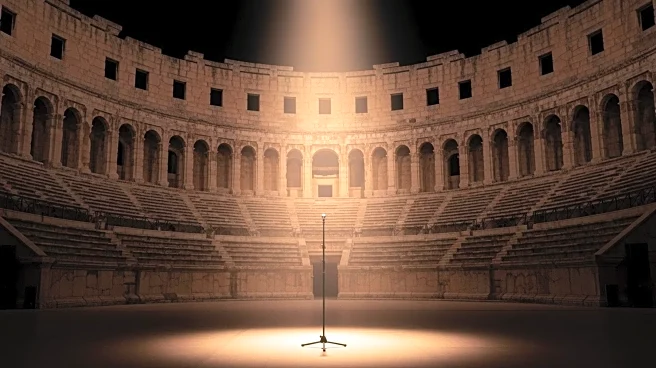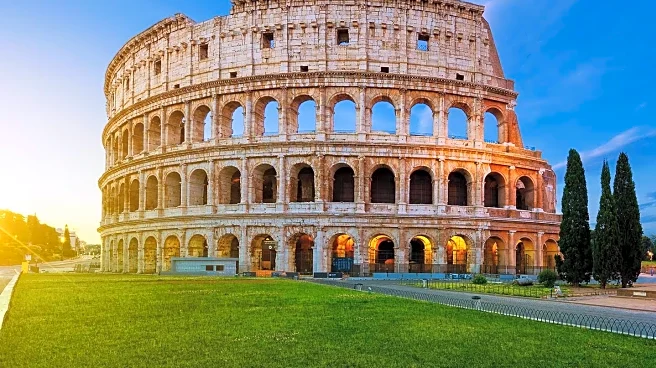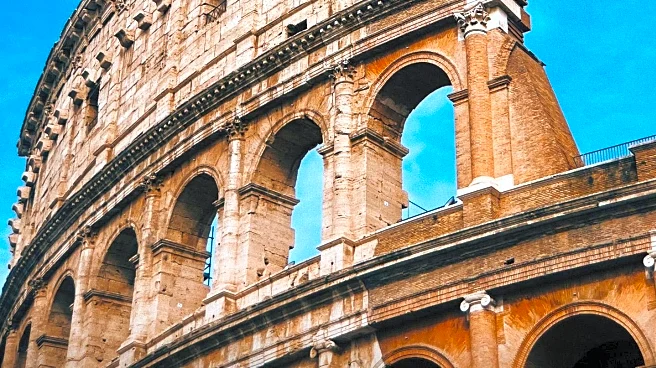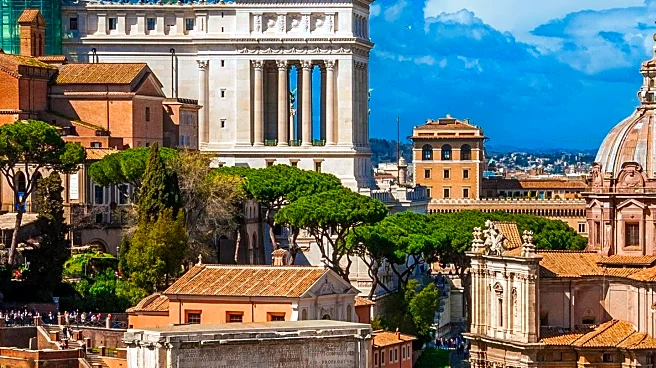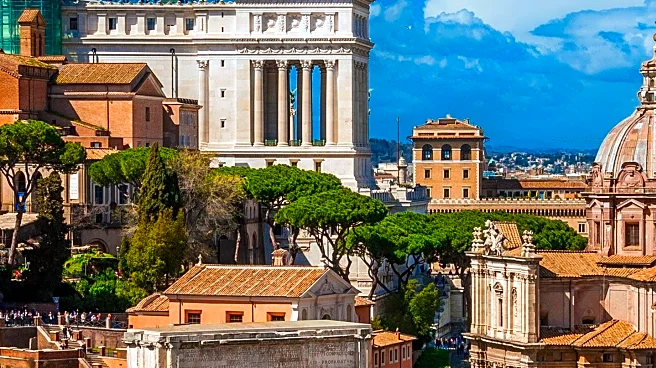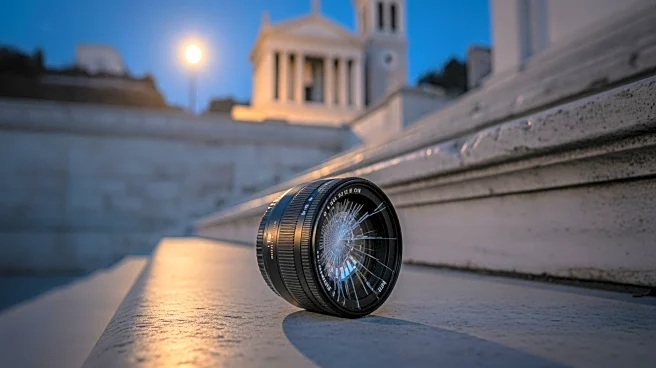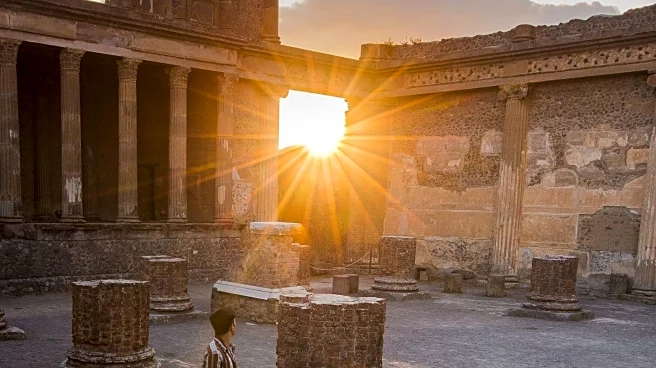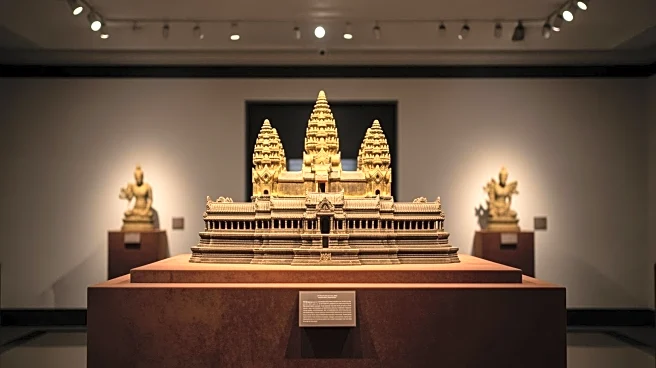What's Happening?
Simone Quilici, the new director of the Archaeological Park of the Colosseum, has clarified his plans for hosting concerts at the historic site. Quilici emphasized that the Colosseum will not host electronic
dance music parties, contrary to rumors circulating on social media. Instead, he plans to introduce concerts that respect the site's cultural and religious significance, such as acoustic or jazz performances. The Colosseum, a nearly 2,000-year-old amphitheater, is integral to Roman identity and hosts religious events like the Via Crucis procession during Easter. Quilici aims to expand the existing platform to accommodate poetry readings, dance performances, and historically accurate gladiatorial reenactments. The first concerts and performances are expected to take place in about two years.
Why It's Important?
The clarification from Quilici is significant as it addresses public concerns about preserving the cultural heritage of the Colosseum. Hosting concerts that align with the site's historical and religious importance could enhance its role as a cultural venue, attracting a diverse audience while maintaining respect for its legacy. This approach may also help manage the increasing tourist numbers, which reached nearly 9 million last year. By offering cultural activities, the Colosseum could become a more enriching experience for visitors, potentially extending their stay in Rome and encouraging exploration of other historical sites.
What's Next?
Quilici plans to open the Colosseum to a broader range of cultural events, including acoustic concerts and historical reenactments, within the next two years. This initiative may require collaboration with various administrations to manage tourist flow and enhance access to nearby sites like the Roman Forum and Palatine Hill. The director's vision includes using the Colosseum as a starting point for exploring less-visited areas, potentially alleviating overcrowding and enriching the cultural experience for visitors.
Beyond the Headlines
Quilici's plans reflect a broader trend of integrating cultural activities into historical sites, which could redefine tourism in Rome. By prioritizing cultural enrichment over commercial tourism, the initiative may set a precedent for other historical sites worldwide, balancing preservation with modern engagement.
